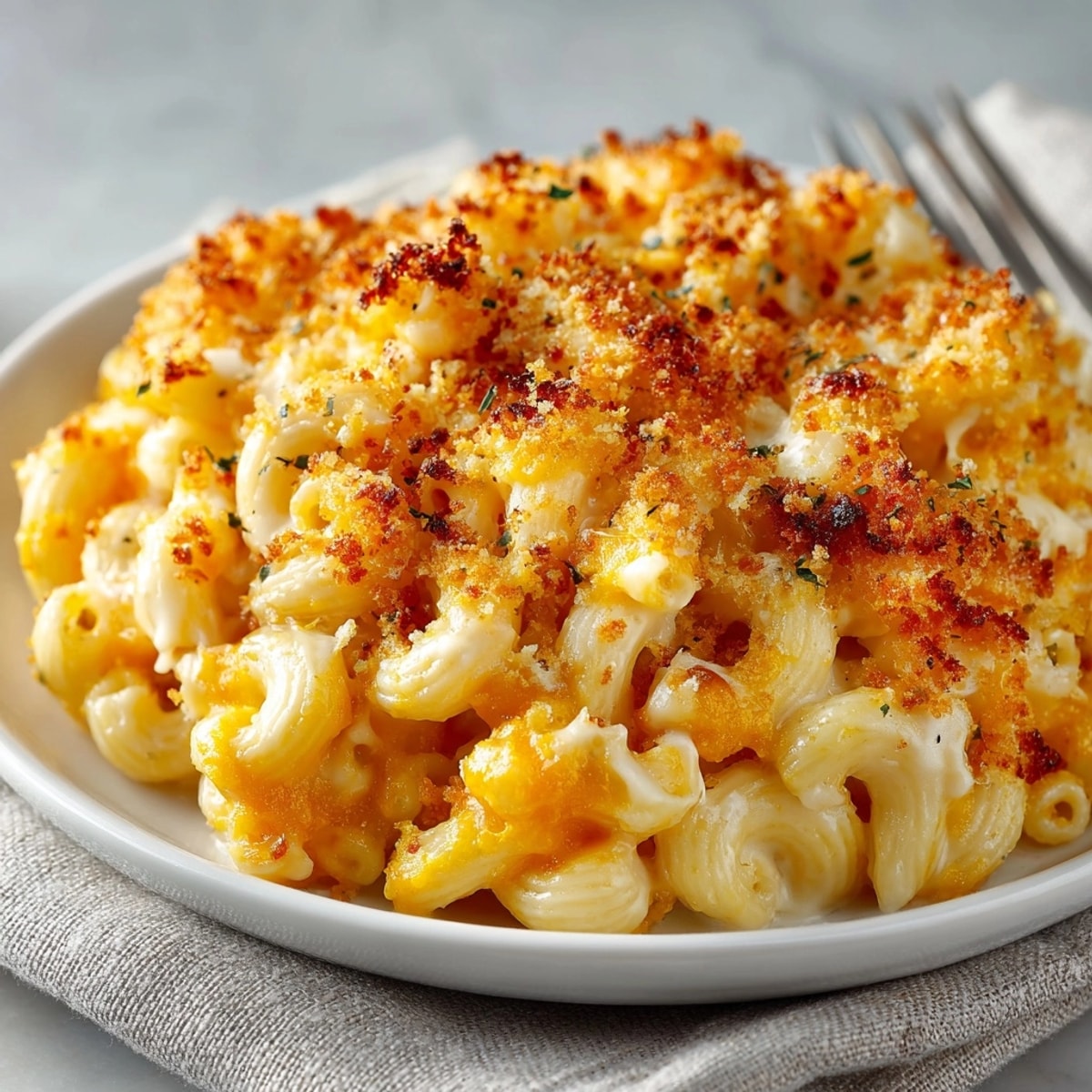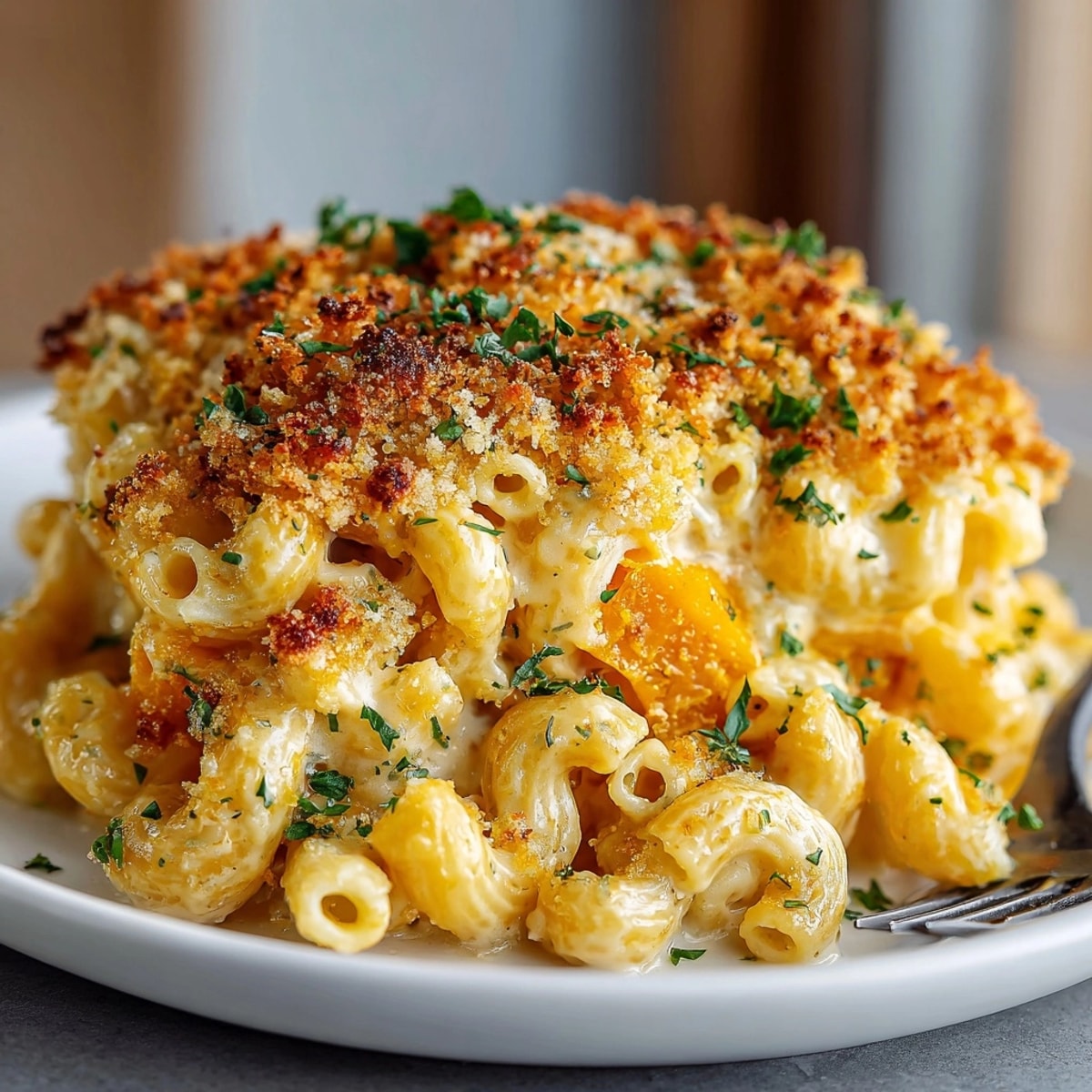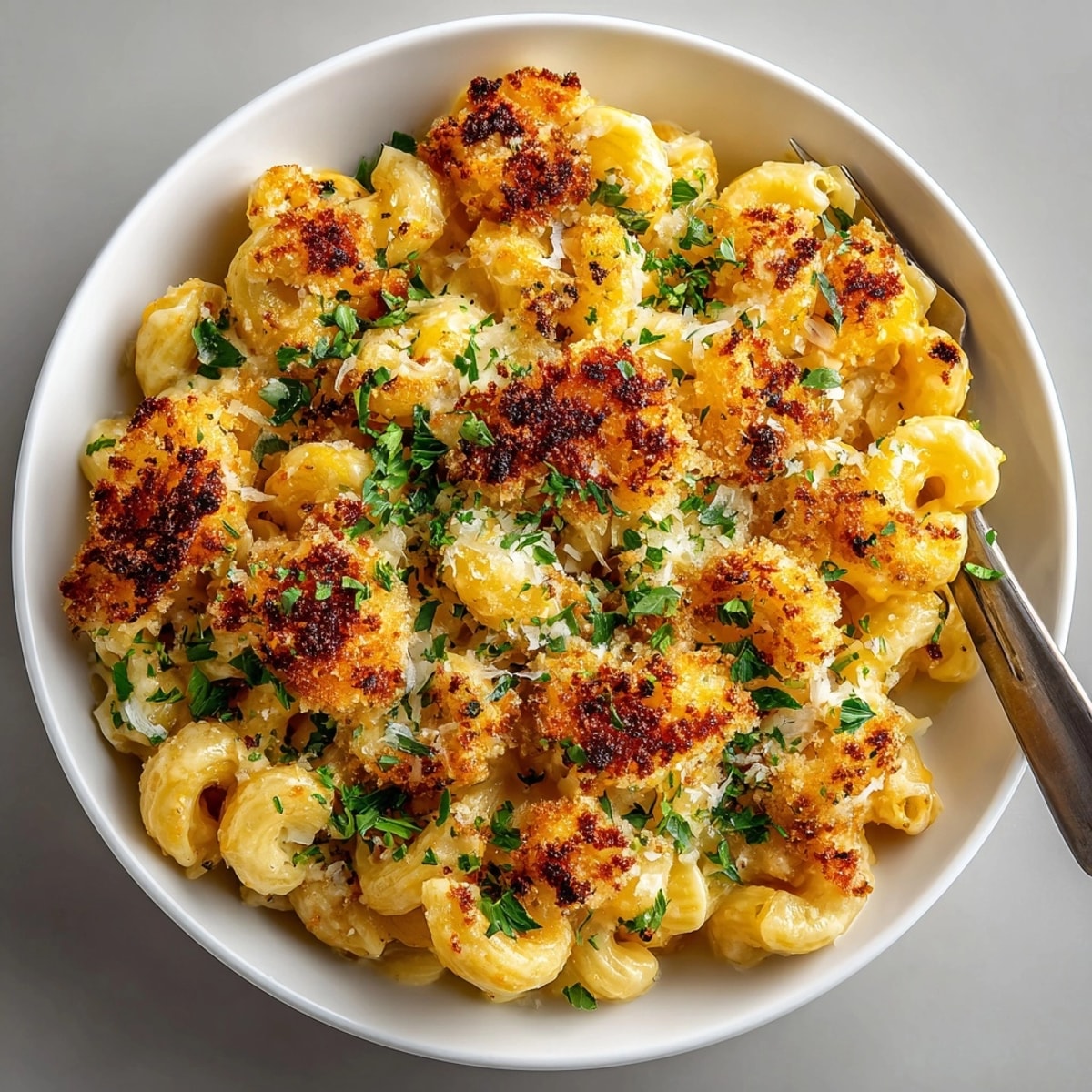 Save
Save This butternut squash mac and cheese transforms a classic comfort food into something special, with sweet roasted squash blended into a velvety cheese sauce that adds both nutrition and a gorgeous golden color.
I first made this recipe when trying to get my picky nephew to eat more vegetables. The vibrant orange color intrigued him enough to try it, and he had no idea he was devouring butternut squash until his third helping!
Ingredients
- Elbow macaroni or small shells: provide the perfect shape for capturing all that creamy sauce. Look for a quality pasta that has a rough texture to help the sauce cling better.
- Butternut squash: creates the silky base for our sauce while adding natural sweetness and nutrition. Choose one that feels heavy for its size with intact skin.
- Sharp cheddar cheese: brings that classic mac and cheese flavor. Splurge on a block you grate yourself for better melting properties.
- Gruyère or mozzarella: adds complexity and that irresistible cheese pull. Gruyère offers nutty depth while mozzarella provides creaminess.
- Whole milk: creates the perfect consistency for our sauce. The fat content helps create a silky texture.
- Flour and butter: form the roux that thickens our sauce beautifully. Use unsalted butter to control the salt level.
- Nutmeg: enhances the savory qualities of both the cheese and squash. Always use freshly grated if possible.
- Panko breadcrumbs: create that irresistible crunchy topping when baked. Their light texture prevents the topping from becoming too heavy.
Instructions
- Roast the Butternut Squash:
- Toss those butternut squash cubes with olive oil, salt, and pepper until evenly coated. Spread them in a single layer on your parchment lined baking sheet—overcrowding will steam rather than roast them. Roast at 400[°]F for 20-25 minutes, looking for that beautiful caramelization on the edges which indicates the natural sugars have developed. The squash should be fork tender when done.
- Cook the Pasta:
- Bring a large pot of water to a rolling boil before adding plenty of salt—it should taste like seawater. Add your pasta and stir immediately to prevent sticking. Cook until just al dente, about 1-2 minutes less than package directions suggest since it will continue cooking in the sauce. Reserve a cup of pasta water before draining, which can help thin the sauce if needed later.
- Blend the Squash:
- Transfer those gorgeous roasted squash cubes to your blender or food processor while they're still warm. Add the vegetable broth and blend until completely smooth, scraping down the sides as needed. The consistency should be like a thick puree with no visible chunks. This creates the velvety base that makes our sauce so special.
- Create the Roux:
- Melt butter in your saucepan over medium heat until it foams slightly but doesn't brown. Sprinkle in the flour and whisk continuously for a full minute—this cooks out the raw flour taste. The mixture should look like wet sand and smell slightly nutty.
- Build the Sauce:
- Pour in the milk gradually while whisking constantly to prevent lumps from forming. Keep whisking until the mixture is smooth and begins to thicken slightly. Add the butternut squash puree and stir to incorporate completely. Season with nutmeg, garlic powder, and mustard powder, which enhance the cheese flavor without overwhelming it.
- Add the Cheese:
- Reduce the heat to low—this is crucial as high heat can make cheese separate and become grainy. Add the cheeses in handfuls, stirring until each addition is fully melted before adding more. The sauce should be glossy and smooth, coating the back of a spoon beautifully.
- Combine with Pasta:
- Add your drained pasta directly to the sauce, folding gently to coat every piece. If the sauce seems too thick, add a splash of the reserved pasta water to reach your desired consistency. The starch in the pasta water helps maintain the silky texture of your sauce.
- Optional Baked Finish:
- For that restaurant quality finish, transfer everything to a buttered baking dish. Mix panko breadcrumbs with melted butter and Parmesan, then sprinkle evenly over the top. Bake until golden brown and bubbling around the edges, about 12-15 minutes. Let it rest for 5 minutes before serving to allow the sauce to set slightly.
 Save
Save The butternut squash is truly the hero of this dish. I discovered its magic when trying to create a mac and cheese with less cheese but all the creamy texture. The natural starchiness of the squash creates that silky mouthfeel we all crave, while its subtle sweetness actually enhances the savory cheese flavors. My grandmother always said the best recipes come from happy accidents, and finding this perfect balance was definitely one of those moments.
Storage and Reheating
This butternut squash mac and cheese actually improves overnight as the flavors meld together. Store leftovers in an airtight container in the refrigerator for up to 4 days. When reheating, add a splash of milk and stir frequently to bring back the creamy texture. The microwave works in a pinch, but reheating in a saucepan over low heat yields the best results, preserving that silky sauce consistency without separation.
For longer storage, this dish freezes beautifully. Portion into freezer safe containers and store for up to 3 months. Thaw overnight in the refrigerator before reheating. The texture may change slightly, but a thorough stirring while warming will revive its creaminess.
Make Ahead Options
This butternut squash mac and cheese is perfect for meal prep. You can roast and puree the squash up to 3 days ahead and store it in the refrigerator. The cheese sauce can also be made a day ahead and stored separately from the cooked pasta. When ready to serve, gently reheat the sauce, adding a splash of milk if needed to loosen it, then combine with freshly cooked pasta.
For a complete make ahead meal, assemble the entire dish with the breadcrumb topping but don't bake. Cover and refrigerate for up to 24 hours. When ready to serve, let it sit at room temperature for 30 minutes before baking, adding an extra 5-10 minutes to the baking time since you're starting with a cold dish.
Seasonal Adaptations
Fall Harvest Version
Use fresh sage leaves fried in butter as a garnish
Add roasted Brussels sprouts or kale for extra nutrition
Mix in some crumbled cooked bacon for a smoky element
Summer Lightened Up
Substitute half the pasta with roasted cauliflower florets for a lower carb option
Add fresh corn kernels for sweet pops of flavor
Top with garden fresh chopped tomatoes and basil after baking
Winter Comfort
Stir in caramelized onions for deep umami flavor
Add a pinch of cinnamon along with the nutmeg for warmth
Serve with a side of cranberry sauce for a sweet tart contrast
 Save
Save This dish is a crowd-pleaser that manages to be both comforting and a little bit healthier. It's a fantastic way to enjoy a classic with a welcome seasonal twist.
Recipe FAQ
- → How do I get a smooth butternut squash puree?
Roast the cubed squash until very tender, then blend with broth in a blender or food processor until completely smooth.
- → Can I use a different cheese for the sauce?
Yes, try mozzarella, Monterey jack, or a smoky gouda for different flavors while maintaining meltiness.
- → Is it possible to make this vegan?
Absolutely! Use plant-based milk, vegan butter, and your favorite dairy-free cheese alternative for a similar texture.
- → How do I prevent the sauce from becoming grainy?
Melt the cheese in the sauce over low heat, stirring constantly and avoiding overheating to keep it silky smooth.
- → What pasta shapes work best?
Elbow macaroni and small shells hold the sauce well, but penne, fusilli, or other bite-sized pasta shapes also work great.
- → Can I prepare this dish in advance?
Yes, assemble ahead and refrigerate. Bake with topping when ready to serve for a fresh, bubbly finish.